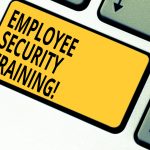We just completed the second of two Fisher Phillips webinars including panelists and contributors who were active and former Department of Homeland Security, Secret Service, and other law enforcement professionals. We solicited questions and concerns from employers and used the panel discussions and preparation to develop more effective practices to prevent and respond to workplace violence. (March 29 archived webinar part 1)
Although interest spikes after every mass shooting, employers have not done much more than update their written workplace violence policies. Most of these policies are simply statements in employee handbooks and include generalized provisions. Likewise, while many employers now show their employees the DHS “Run, Hide, Fight” video on how to respond to an active shooting, employers have not increased training or revised evacuation programs, emergency action plans or emergency response plans.
An attitude change is required. While it is still unlikely that your workplace will experience a mass shooting, the frequency of such events is rapidly increasing. Such events can destroy a business. Similarly, less serious instances of workplace violence occur hundreds of thousands of times per year.
Some of our conclusions are as follows:
- No checklist will identify every employee prone to workplace violence or a mass shooting. The best approach is to encourage employees to raise concerns about coworkers. Postmortem reviews often show that coworkers were aware that something was not quite right with an employee or that an employee was going through domestic abuse or another situation which might introduce violence to the workplace.
- Think you can spot the potential workplace shooter? Consider the following myths …
Myth 1: There is a profile of “the shooter…”
Fact: Shooters and non-lethal approachers do not fit one descriptive or demographic profile or even several descriptive or demographic profiles.
Myth 2: Workplace shooting is a product of mental illness or derangement.
Fact: Mental illness only rarely plays a key role in an assassination event.
Myth 3: The persons most likely to carry out threats are those who make direct threats.
Fact: Persons who carry out attacks often do not make threats; especially direct threats.
From US DOJ – Protective Intelligence and Threat Assessment Investigations (1998).
- Encourage employees to tell management if they have obtained a restraining order against someone or if they are involved in a domestic abuse situation. Once the employer solicits this information, they also accept a duty to take some sort of reasonable action. However, the alternative may be to be featured in the next day’s news.
- We must train supervisors to get serious about dealing with bullying and workplace rage and anger. It is better to deal with employees before their bad behavior festers. Moreover, bullied employees may claim that their mistreatment was based upon sex, national origin or other characteristic, and raise hostile environment claim.
- Strengthen Workplace Violence, Workplace rage, No Harassment, No Bullying, and Complaint procedures.
- Proactively deal with concerns about guns in the workplace. All of the safety professionals with whom we conferred do not support employees bring their guns to work. Law enforcement professionals are worry about employees who have not received law enforcement training using hand guns in the workplace. Similarly, law enforcement officials worry about shooting or being shot by an employee who has a gun when the officers respond to a crime situation.
Action Point: Employers will have to evaluate state laws dealing with employer rights to carry guns in the workplace. Different standards may apply to guns retained in employees’ vehicles in parking lots.
- An attitude change is required in evaluating the hard security of the workplace. Many businesses object to the thought of blocking access from the lobby or placing receptionists behind a high counter or Lexar window. However, employees need to engage in a realistic risk analysis and determine appropriate steps.
The above points are just some of the lessons from this ongoing process, and even these recommendations should be applied and on a case-by-case basis.
We strongly encourage employers to contact their FP counsel about revising various policies and obtaining resources in evaluating their unique security issues.
Relevant Links:
Suicide Prevention (ABA article focusing on lawyers) – depressed employees present more of a danger to themselves than to others, but many of the same steps intended to prevent workplace violence may also prevent a suicide.
Click here for the original article.




Leave a Reply